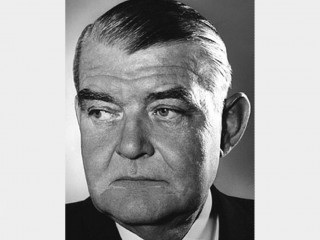
Hjalmar Riiser-Larsen biography
Date of birth : 1890-06-07
Date of death : 1965-06-03
Birthplace : Oslo, Norway
Nationality : Norwegian
Category : Science and Technology
Last modified : 2010-07-19
Credited as : Aviation pioneer, polar explorer, businessman
0 votes so far
Riiser-Larsen was born in Oslo, Norway, in 1890. In 1909, aged nineteen, he joined the Norwegian Naval Academy and in 1915 the newly-formed Royal Norwegian Navy Air Service. After World War I, he served as the acting head of the RNoNAS's factory until a more senior officer was appointed. In 1921, he joined the Aviation Council, then part of the Norwegian Ministry of Defence, as a secretary. This gave him the opportunity to study the fledgling military and civil aviation infrastructure for which the Council was responsible. He also became a frequent pilot on the air routes used by the new aviation companies.
Over the North Pole
Riiser-Larsen's years of polar exploration began in 1925 when his compatriot Roald Amundsen, the famed polar explorer, asked him to be his deputy and pilot for an attempt to fly over the North Pole. Riiser-Larsen agreed and secured the use of two Dornier Do J Wal seaplanes. The expedition, however, was forced to land close to the Pole, badly damaging one of the planes. After twenty-six days on an ice shelf, first trying to shovel tons of snow to create an airstrip, until someone suggested the easier way of tramping the snow surface, the expedition's six members squeezed themselves into the remaining plane. Riiser-Larsen somehow managed to coax the overloaded plane into the air and flew the expedition back to the coast of Northern Svalbard..
The following year, Riiser-Larsen rejoined Amundsen for another attempt to fly over the Pole, this time with Italian aeronautical engineer Umberto Nobile in his recently-renamed airship, the Norge. Leaving Spitsbergen on 11 May 1926, the Norge completed the crossing two days later, landing near Teller, Alaska. The flight is considered by many to be the first successful flight over the North Pole, as the other claimants, Frederick Cook, Robert Peary and Richard Byrd, were unable to verify their attempts in full.
In 1928, Riiser-Larsen became involved in searching the Arctic for Nobile after he had made a successful flight to the Siberian islands and visited the North Pole once more, but crashed near the coast of ther North Eastern part of Svalbard.Riiser-Larsen also became involved in a search for Amundsen, when he as passenger in a French naval flyingboat went missing while he was en route to join the search for Nobile. Eventually Nobile and most of his team were found, but Amundsen was not.
In 1927 Riiser-Larsen wrote an infamous and most unfair chapter about Nobile in Roald Amundsen's memoir book "Mitt Liv som Polarforsker" (My Life as Polar Explorer).
The Norvegia expeditions
The Norvegia expeditions were a sequence of Antarctic expeditions financed by the Norwegian shipowner and whaling merchant Lars Christensen during the late 1920s and 1930s. Ostensibly their goal was scientific research and the discovery of new whaling grounds, but Christensen also requested permission from the Norwegian Foreign Office to claim for Norway any uncharted territory that was found. By the end of the second expedition, two small islands in the Southern Ocean, Bouvet Island and Peter I Island, had been annexed.
In 1929 Christensen decided to include aeroplanes in the next expedition and appointed Riiser-Larsen its leader. Riiser-Larsen then supervised and took part in mapping most of the Antarctic in this and three further expeditions. More territory was also annexed, this time the large area of the continent known as Queen Maud Land.
















